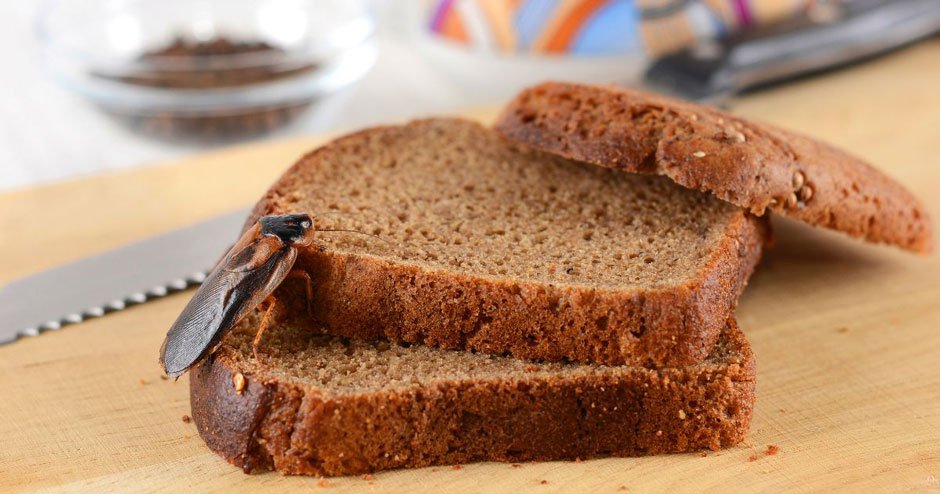 Pest control in restaurants and cafes is essential for maintaining a safe and sanitary environment for both your customers and staff. Preventing pest infestations in commercial kitchens helps avoid contamination, health code violations, and damage to your reputation. Common pest risks include rodents, cockroaches, flies, and ants that thrive in food preparation areas.
Pest control in restaurants and cafes is essential for maintaining a safe and sanitary environment for both your customers and staff. Preventing pest infestations in commercial kitchens helps avoid contamination, health code violations, and damage to your reputation. Common pest risks include rodents, cockroaches, flies, and ants that thrive in food preparation areas.
You need a proactive approach to regularly monitor and address these risks. Effective pest control involves proper sanitation, sealing entry points, and collaborating with professional services to promptly address any outbreaks. By understanding the unique challenges of pest control in restaurants and cafés, you protect your business and ensure food safety.
Understanding Pest Risks in Food Service
In restaurants and cafés, pests risks arise primarily from accessible food, water, and shelter. Managing these risks requires awareness of common pest types, their effects on your establishment, and identifying signs of infestation early. Timely action supports effective pest control and compliance with health standards.
Common Pests in Restaurants and Cafés
Rats, mice, cockroaches, flies, and ants are the most frequent pests in commercial kitchens. Rats and mice contaminate food with their urine and droppings, spreading diseases such as salmonella. Cockroaches thrive in warm, moist areas and carry bacteria that cause food poisoning.
Flies transmit pathogens by landing on food and surfaces. Ants can rapidly infiltrate kitchens in search of sugary or greasy residues. In Wylie, seasonal changes significantly impact pest activity, making year-round pest management essential for dining establishments.
Impact of Pests on Dining Establishments
Pests pose significant health risks, including contamination and the transmission of foodborne illnesses. They damage reputation and can lead to costly fines or closures from health inspectors. You may face lost customers and reduced revenue when pests are detected.
Structural damage caused by rodents chewing wiring or insulation incurs additional repair expenses. The presence of pests also violates sanitary codes, leading to increased scrutiny from local authorities. Maintaining diligent pest control in restaurants and cafés safeguards your business integrity.
Recognizing Early Warning Signs
Look for droppings, gnaw marks, grease stains, and nesting materials in kitchen corners or storage areas. Unusual odors or pest sightings during off-hours signal problems. Sticky traps and monitoring stations help detect insect activity before infestations grow.
Regular staff training on detecting signs and proper waste disposal reduces pest attraction. Early identification enables targeted interventions, minimizing disruption and associated costs. You should integrate pest risk monitoring into your standard cleaning and maintenance routines.
 Best Practices for Pest Prevention
Best Practices for Pest Prevention
Maintaining a pest-free environment requires a combination of strategic planning and diligent daily actions. Effective prevention involves managing multiple factors such as habitat elimination, sanitation, and targeted control measures tailored to your food service setting.
Integrated Pest Management Strategies
Integrated Pest Management (IPM) focuses on combining prevention, monitoring, and control tactics to maintain pest populations at safe levels. You start by identifying pest risks specific to your restaurant’s layout and food storage areas.
Regular inspections help detect early signs of infestation. Use traps and non-chemical methods first to reduce pest populations before considering pesticides.
Recordkeeping is critical. Document all findings and treatments to monitor pest activity trends and improve your approach over time.
IPM minimizes chemical use, protecting your food, staff, and customers while maintaining compliance with health regulations.
Rodent Prevention in Food Service Settings
Rodents pose significant risks in food service due to contamination and property damage. You can block entry points such as cracks in walls, vents, and doors by sealing them with materials like steel wool and caulk.
Keep storage areas clean and store food in sealed containers. Avoid leaving scraps or grease on floors and surfaces since these attract rodents.
Implement scheduled maintenance to check pipes and drains for gaps. Use mechanical traps placed strategically along walls and behind appliances to catch pests.
Training staff to recognize early signs of rodent activity improves rapid response and helps sustain pest-free operations.
Effective Insect Control for Restaurants
Insects such as flies, cockroaches, and ants spread pathogens and compromise food safety. You must use screens on windows and doors to block flying insects physically.
Store food in airtight containers and clean up spills immediately, especially those from sugary or greasy residues. Regularly empty trash bins and sanitize waste areas.
Use sticky traps or light traps in non-food preparation areas instead of relying solely on chemical insecticides. Targeted treatment around entry points and breeding sites limits infestations.
Monitoring insect activity with routine inspections enables early detection and reduces the chance of widespread contamination.
Restaurant Hygiene and Pest Prevention
Hygiene practices significantly affect pest prevention. You should clean floors, counters, and equipment after every shift to remove food debris that attracts pests.
Grease traps and drains need regular cleaning to prevent buildup, which can harbor cockroaches and flies. Maintain organized storage areas to avoid clutter that can provide hiding places for pests.
Staff training on hygiene standards encourages consistent pest prevention behavior. Promote immediate reporting of spills, leaks, or pest sightings.
Using EPA-approved disinfectants during sanitation reduces microbial buildup that could draw insects and rodents to your facility.
 Compliance and Food Safety Considerations
Compliance and Food Safety Considerations
Maintaining strict control over pests is essential for any restaurant or café. You’ll need to comply with local health codes while implementing safe practices that protect both your food and customers. Proper pest management supports your compliance efforts and helps prevent contamination risks.
Meeting Health Code Pest Requirements in Wylie
Wylie health code pest compliance requires that you routinely inspect and eliminate signs of pests such as rodents, cockroaches, and flies. The Wylie Health Department mandates keeping all food storage and preparation areas free from infestations.
You must seal entry points, manage waste properly, and maintain clean surfaces to prevent contamination. Records of pest control treatments are often required during health inspections. Failing to comply with these rules can result in citations or business closures.
Regular monitoring and professional pest control services can help you consistently meet these standards. Staying proactive ensures you avoid penalties and protect your establishment’s reputation.
Food Safety and Pest Control Best Practices
To prevent food safety hazards associated with pests, implement an integrated pest management (IPM) strategy. This includes sanitation, physical barriers, and minimal use of chemical controls when necessary.
Focus on:
- Storage:Keep dry goods in sealed containers off the floor.
- Waste:Empty bins frequently and use covered dumpsters.
- Cleaning:Sanitize floors, counters, and drains on a daily basis.
- Inspection:Regularly check dark, damp areas for signs of infestation.
Work closely with licensed pest control providers to use targeted treatments that avoid contaminating food or surfaces. Training your staff to identify early signs of pest activity is also critical for a prompt response.
For effective and humane pest control solutions, call Critter Stop at (214) 234-2616 for a free inspection. Critter Stop is recognized for delivering thorough, high-quality work with exceptional customer service, earning strong, positive online reviews. Their expertise ensures your property remains safe and pest-free.





Leave a Reply